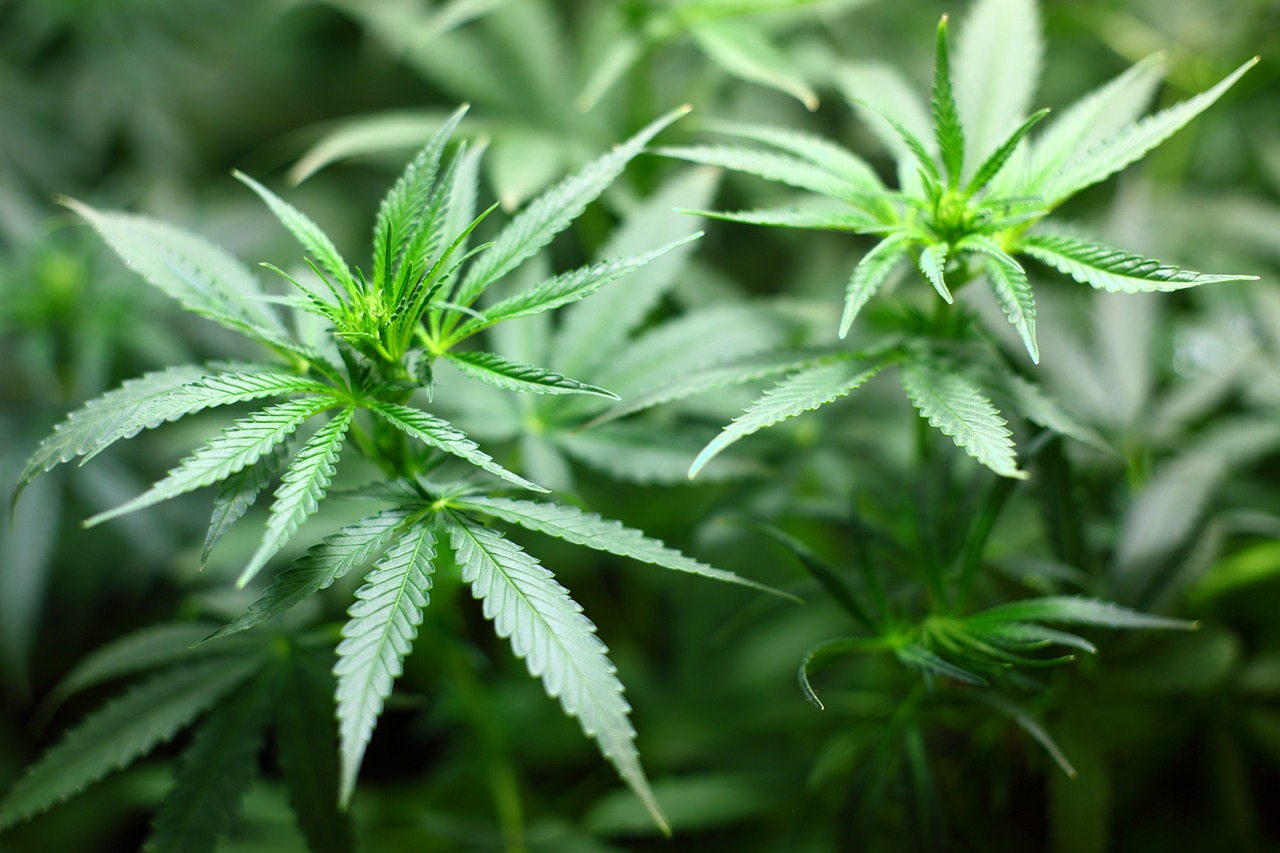When it comes to managing expenses in the cannabis cultivation industry, it’s crucial to refine your cost control strategies for optimal efficiency. By honing in on key areas such as understanding cost structures, implementing lean techniques, and utilizing advanced technology solutions, you can pave the way for sustainable growth and profitability. But how exactly can these strategies be tailored to suit the unique needs of cannabis cultivators? Let’s explore the intricacies of cultivating efficient cost-control methods tailored specifically to the cannabis industry.
Key Takeaways
- Analyze expenses and categorize costs to identify areas for cost reduction.
- Implement lean techniques like waste reduction and continuous improvement to drive efficiency.
- Utilize technology solutions for automation and productivity improvement.
- Focus on energy efficiency optimization to reduce costs and enhance sustainability.
Understanding Cost Structures
Understanding the cost structures in cannabis cultivation is essential for implementing effective cost-control strategies. Analyzing expenses and cost breakdowns is crucial to identify areas where savings can be made. By breaking down costs into categories such as labor, materials, equipment, and overhead, cultivators can pinpoint where the majority of their expenses lie. This data-driven approach allows for a more in-depth understanding of the financial aspects of cultivation, enabling cultivators to make informed decisions to optimize their cost structures.
When analyzing expenses, it is important to consider both direct and indirect costs associated with cultivation. Direct costs include items such as seeds, nutrients, and labor directly involved in the cultivation process. On the other hand, indirect costs encompass expenses like utilities, rent, and administrative overhead. By categorizing expenses in this manner, cultivators can gain a comprehensive view of their cost structures and prioritize areas for cost-saving measures. Having a clear cost breakdown is the first step toward implementing effective cost-control strategies in cannabis cultivation.
Implementing Lean Techniques
To enhance cost control and operational efficiency in cannabis cultivation, implementing lean techniques is crucial for streamlining processes and eliminating wasteful practices. Lean techniques focus on reducing waste and increasing productivity by identifying and eliminating activities that do not add value to the final product. By implementing lean principles such as Just-in-Time manufacturing, continuous improvement, and value stream mapping, cannabis cultivators can optimize their operations and reduce unnecessary costs.
Reducing waste in cultivation processes can lead to significant cost savings. Cultivators can operate more efficiently and effectively by minimizing excess inventory, unnecessary movements, and overproduction. This not only helps in cost reduction but also enhances overall productivity. Implementing lean techniques also involves empowering employees to identify and address inefficiencies in the production process, fostering a culture of continuous improvement and innovation.
Incorporating lean methodologies into cannabis cultivation operations can result in a leaner, more agile business model that is better equipped to adapt to market changes and meet consumer demands. By focusing on eliminating waste and enhancing productivity, cultivators can establish a competitive edge in the industry while maintaining cost-effective operations.
Utilizing Technology Solutions
Efficiently incorporating technology solutions into cannabis cultivation processes can significantly enhance operational effectiveness and cost control. By leveraging automation benefits and data analytics, cultivators can streamline their operations and make informed decisions based on real-time insights. Utilizing technology for inventory tracking allows for better management of stock levels, reducing waste, and optimizing purchasing strategies. Additionally, compliance monitoring software ensures adherence to regulatory requirements, avoiding costly penalties and potential shutdowns.
Embracing these technological advancements not only boosts efficiency but also enhances transparency and accountability within the cultivation process. Integrating these tools into your operations can lead to improved productivity, reduced expenses, and ultimately, increased profitability. So, consider implementing these technology solutions to stay ahead in the competitive cannabis cultivation industry.
Optimizing Energy Consumption
How can cannabis cultivators optimize energy consumption to reduce costs and improve sustainability in their operations? One way is by implementing energy-efficient lighting solutions. LED lights, for example, consume significantly less electricity compared to traditional lighting options, leading to cost savings over time. By strategically placing these energy-efficient lights and utilizing automated controls, cultivators can ensure that plants receive the right amount of light while minimizing energy wastage.
Another approach to optimizing energy consumption is to use smart irrigation technologies. These systems can be programmed to deliver precise amounts of water to plants based on their specific needs, reducing water and energy waste. By incorporating sensors and automation into the irrigation process, cultivators can achieve higher efficiency levels and better control over resource usage.
Streamlining Supply Chain Processes
By integrating technology and data analysis, cannabis cultivators can enhance efficiency in their supply chain processes. This optimization ensures a smoother flow of products and materials, ultimately leading to cost savings and improved overall operations. Here are some key areas where streamlining can make a significant impact:
- Inventory Management: Implementing automated inventory tracking systems can prevent overstocking or stockouts, reducing waste and optimizing storage space.
- Procurement Optimization: Utilizing data analytics to forecast demand accurately can lead to better purchasing decisions, ensuring that raw materials are available when needed without excess inventory costs.
- Production Efficiency: Applying data-driven insights to production processes can help identify bottlenecks and inefficiencies, allowing for targeted improvements that enhance output without sacrificing quality.
- Distribution Logistics: Streamlining transportation and delivery processes through route optimization and real-time tracking can reduce lead times and minimize transportation costs, improving customer satisfaction.
Outsourcing Non-Core Functions
Outsourcing non-core functions can significantly enhance operational efficiency and cost-effectiveness for cannabis cultivators. By leveraging vendor management expertise, cultivators can realize substantial cost savings through negotiated contracts, bulk purchasing discounts, and streamlined procurement processes. This strategic approach allows cultivators to focus on their core competencies such as cultivation techniques and product innovation, while leaving non-essential tasks to specialized third-party providers.
Moreover, process automation plays a crucial role in driving efficiency gains when outsourcing non-core functions. Automation tools can streamline repetitive tasks, reduce manual errors, and improve overall process efficiency. By automating tasks like inventory management, payroll processing, and compliance reporting, cultivators can free up valuable time and resources to allocate toward core business activities.
Monitoring Key Performance Indicators
To optimize operational performance and ensure strategic decision-making, cannabis cultivators must rigorously monitor key performance indicators. Monitoring key performance indicators allows you to track crucial aspects of your cultivation process, enabling you to make informed decisions and adjustments. Here are essential key performance indicators to focus on:
- Yield Analysis: Tracking the quantity and quality of your yield per harvest can provide valuable insights into the effectiveness of your cultivation techniques.
- Labor Efficiency: Monitoring labor efficiency metrics such as labor cost per pound of product or labor hours per plant can help you assess the productivity of your workforce.
- Energy Consumption: Monitoring energy usage patterns can help identify inefficiencies in your cultivation operation and optimize energy costs.
- Inventory Management: Tracking inventory turnover rates and levels can help streamline supply chain processes and reduce storage costs.
Investing in Employee Training
Investing in employee training enhances operational efficiency and cultivates a skilled workforce essential for sustainable growth in the cannabis cultivation industry. Skill development is crucial in ensuring that your team is equipped with the knowledge and expertise needed to navigate the complexities of cannabis cultivation. By implementing comprehensive training programs, you can empower your employees to perform their roles effectively, ultimately contributing to increased productivity and cost control within your operation.
| Benefits of Investing in Employee Training | ||
|---|---|---|
| 1. Improved operational efficiency | ||
| 2. Enhanced quality of output | ||
| 3. Reduced costs through skilled labor |
Training programs not only help in honing specific skills required for cannabis cultivation but also foster a culture of continuous learning within your organization. Investing in your employees’ development not only benefits your business directly but also creates a sense of belonging and loyalty among your workforce. Remember, a well-trained team is a valuable asset in the competitive landscape of the cannabis industry.
Embracing Sustainable Practices
Enhancing operational sustainability in cannabis cultivation involves integrating eco-friendly practices that not only reduce costs but also promote environmental responsibility in the industry. Embracing sustainable cultivation methods not only benefits the environment but also your bottom line. Here are some key eco-friendly practices to consider:
- Water Conservation: Implementing drip irrigation systems and rainwater harvesting techniques can significantly reduce water usage.
- Energy Efficiency: Utilize LED lighting and energy-efficient HVAC systems to lower energy consumption.
- Waste Management: Implement composting programs and recycling initiatives to minimize waste and its environmental impact.
- Natural Pest Control: Utilize beneficial insects and organic pest control methods to reduce the need for harmful pesticides.
Frequently Asked Questions
How Can Cannabis Cultivators Effectively Navigate Changing Regulatory Requirements to Control Costs?
You must prioritize compliance management and operational efficiency to navigate changing regulatory requirements and control costs. Stay up-to-date with regulatory changes to ensure cost containment. Implement streamlined processes to optimize resources and minimize expenses. By proactively managing compliance and enhancing operational efficiency, you can adapt to regulatory shifts while keeping costs in check. This data-driven approach will help you maintain a competitive edge in the cannabis cultivation industry.
What Are Some Common Challenges Faced by Cannabis Cultivators When Trying to Implement Cost Control Strategies?
When trying to implement cost control strategies, cannabis cultivators commonly face challenges like navigating compliance requirements and integrating technology solutions efficiently. Compliance hurdles often arise due to evolving regulations, necessitating constant adaptation. Implementing technology can be daunting, requiring a balance between upfront costs and long-term benefits. By addressing these challenges strategically, cultivators can enhance operational efficiency and maintain cost-effective practices in a dynamic industry landscape.
How Can Cultivators Effectively Balance Cost Control Efforts With Maintaining High-Quality Products?
To effectively balance cost control efforts with maintaining high-quality products, you must scrutinize expenses meticulously while optimizing production processes. You can streamline operations without compromising quality by implementing efficient resource allocation, monitoring waste, and leveraging technology. Conducting regular quality checks, investing in staff training, and fostering a culture of continuous improvement can further ensure that cost-saving measures align with delivering top-tier cannabis products.
What Are Some Innovative Ways That Cannabis Cultivators Can Reduce Waste and Improve Efficiency in Their Operations?
To enhance operations, consider implementing automation to streamline processes. Utilize technology for precise monitoring and data analysis. By reducing manual labor and optimizing resource allocation, you can boost efficiency and minimize waste. Embracing innovative solutions allows for better control over production costs and higher productivity. Implementing these strategies can lead to a more sustainable and profitable cannabis cultivation business.
How Can Cultivators Adapt Their Cost Control Strategies to Account for Fluctuations in the Cannabis Market?
To adapt your cost control strategies for market fluctuations, focus on adjusting pricing in response to shifting market trends. Analyze sales data regularly to identify patterns and make informed pricing decisions. Utilize flexible pricing models and consider implementing tiered pricing structures to cater to varying customer segments. By staying agile and proactive in your pricing approach, you can navigate the volatile cannabis market more effectively and maintain profitability.


